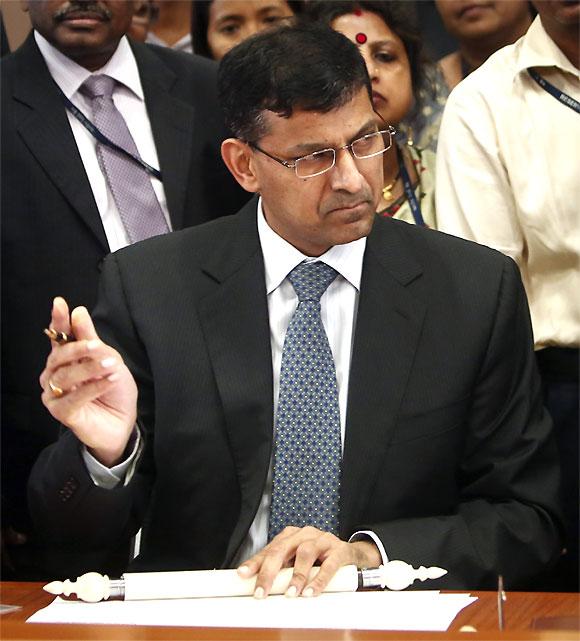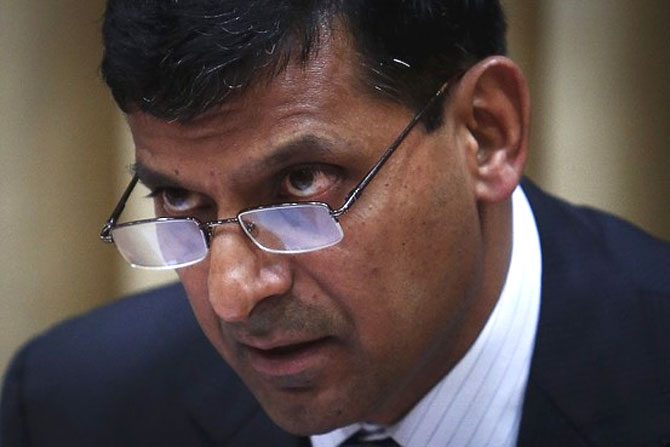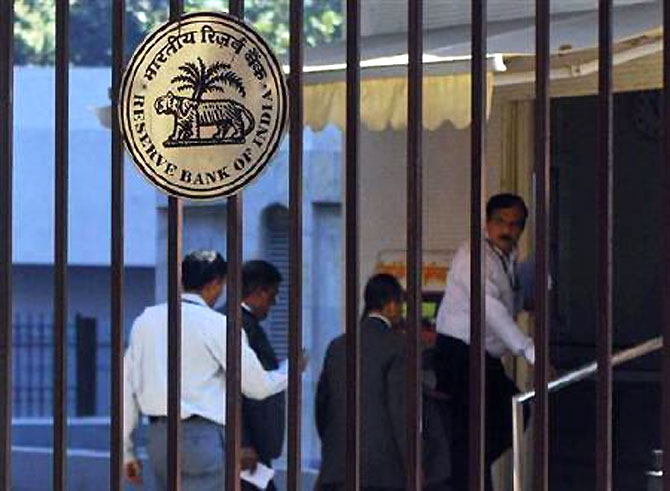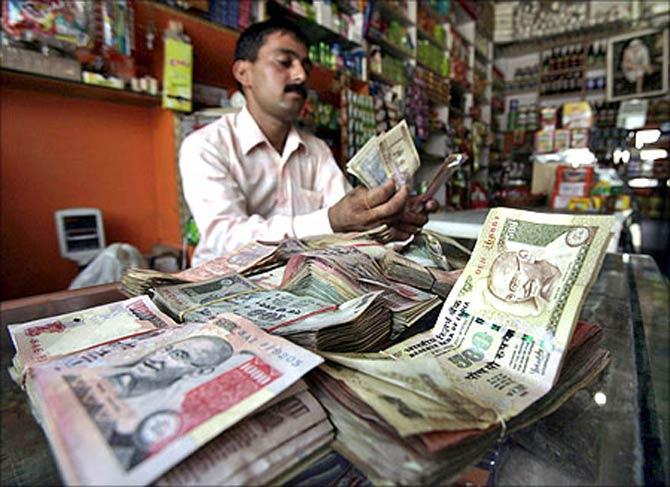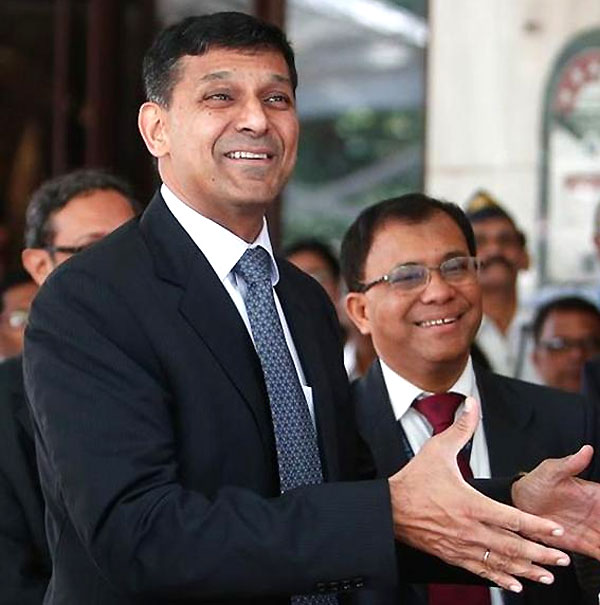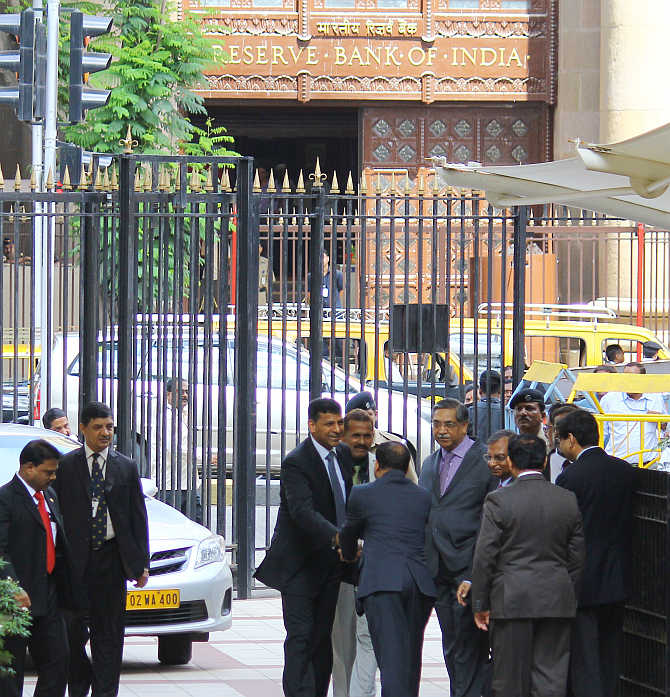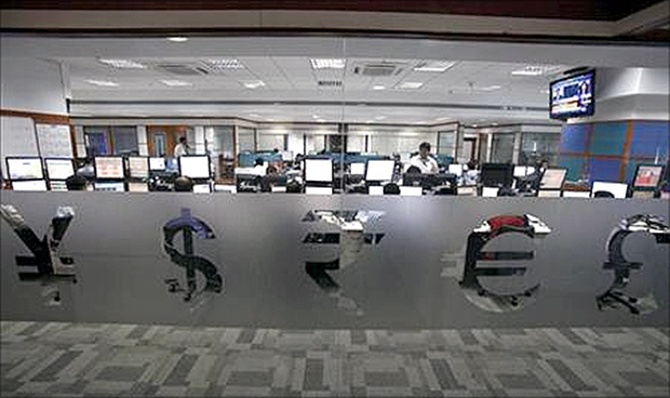 | « Back to article | Print this article |
'RBI to get glimpses of Rajan's technical acumen soon'
A few market and economic indicators have begun looking up, thanks to what many term the ‘Rajan effect’.
However, the new Reserve Bank of India governor, who recommended overreaching financial sector reforms in a report five years ago, might not be able to implement these fully, Financial Services Secretary Rajiv Takru tells Business Standard in an interview.
Excerpts:
With Raghuram Rajan taking charge as the new RBI governor, do you think differences between North Block and Mint Road would narrow?
When there are two thinking people, they are bound to have different opinions.
When two people think about the same thing, they frequently come out with interpretations and solutions that differ. I don’t think we should blow it out of proportion and call it differences.
Click NEXT to read further. . .
'RBI to get glimpses of Rajan's technical acumen soon'
What changes is Rajan expected to bring to RBI?
Everybody brings his own kind of a thinking process to a job; Rajan is a different man.
So, I believe his thinking process would be a little different.
He is an academic and known across the world for his technical acumen.
I suppose we would see some glimpses of that.
Click NEXT to read further. . .
'RBI to get glimpses of Rajan's technical acumen soon'
What kind of reforms can we expect in the banking and financial sector?
Financial sector reforms are part of an ongoing process.
Whatever has been there on the cards would continue.
There could be a slight change in emphasis because of a new person coming in; that always happens.
But the system is huge and much beyond an individual. So, I don’t expect anything earth-shaking.
But I would certainly expect different prioritisation and emphasis within the broad framework of the established policy.
Click NEXT to read further. . .
'RBI to get glimpses of Rajan's technical acumen soon'
In 2008, Rajan had presented a report on financial sector reforms. Would that be implemented now?
I’m not quite sure what that means because we all have opinions and an opinion expressed in isolation, as an academician, may not be transferred fully on the ground.
We need to understand the slight difference between the nitty-gritty of the field and academics.
We all live in an external environment controlled by forces beyond your control.
Last month, you had said more measures would be taken to attract capital flows.
After RBI’s announcement last week, can we expect more measures?
Certainly.
Those were measures on the cards.
These measures are coming one after the other and fortunately, each is having a positive effect.
It’s a dynamic system out there.
If anything more is necessary, it will be done.
If any adjustment is required, it would be made.
Credit demand is expected to pick up, as some sectors have started looking up.
Click NEXT to read further. . .
'RBI to get glimpses of Rajan's technical acumen soon'
Is there a case for a cut in the cash reserve ratio or repo rate in the mid-quarter monetary policy review later this month?
I cannot comment on CRR and repo rate.
But I certainly expect credit demand to look up, especially with the Cabinet Committee on Investment clearing 35 projects last time.
I expect some more would be cleared at its September 17 meeting.
These cleared projects would be the first in line (to get loans).
Sectors such as agriculture are expected to take off.
Now, we are giving more and more thrust to education loans and micro, small and medium enterprises.
The economy will start stabilising. I think we have hit the turf and are moving up now.
Click NEXT to read further. . .
'RBI to get glimpses of Rajan's technical acumen soon'
There is speculation RBI may do away with the mid-quarter review of monetary policy. What are your views on that?
You can have as many reviews as you want.
No review ever hurts you; it merely gives you an idea of where you stand.
What you do with the results of the review is up to you.
I never block information on the grounds that it is bad news.
So, if you have a review and all kinds of feedback, that’s a good thing.
Whether to continue with it or not is RBI’s call.
Click NEXT to read further. . .
'RBI to get glimpses of Rajan's technical acumen soon'
Banks will no longer have to come to RBI for setting up a branch. Do you agree with the central bank on this issue?
This is part of the regulator’s role. I’m sure they have a good reason for whatever they think.
If they think people should be allowed to open branches wherever they want. . . I’m not quite sure that’s what they meant, but whatever they do, they are reasonably sensible people.
If we find there is something on which we need to give our views, we would chip in and do that.
Asset quality of banks is a huge concern.
Click NEXT to read further. . .
'RBI to get glimpses of Rajan's technical acumen soon'
If you include restructured assets, gross non-performing assets would stand at about 10 per cent. What steps are being taken to address this?
Asset quality is something that cannot be compromised and banks are taking measures.
Restructured assets are of two kinds: First, genuine defaulters, and that’s hardly an NPA.
They are the people who need handholding.
So it’s not a matter of worry.
The problem is about those who didn’t deserve restructuring.
Now, there is an across-the-board consensus they have to be dealt with harshly.
Click NEXT to read further. . .
'RBI to get glimpses of Rajan's technical acumen soon'
RBI has said the statutory liquidity for banks would be reduced. How would that affect government bonds?
RBI takes a decision after taking into account all kinds of factors.
I don’t think we should look at anything RBI does as something it has done without consideration.
The minute there is some doubt about what is happening, we sit down and discuss.
What decision do you expect at the coming meeting of the US Federal Reserve on tapering its bond-buying programme?
It’s a free world.
They can do whatever they feel is proper and in their interest; we shall take whatever steps are necessary for us.
